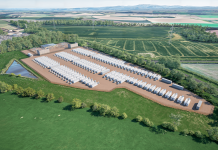 National Grid’s first demand turn up trial concluded at the end of September. The Energyst asked aggregators how they see the service taking shape.
National Grid’s first demand turn up trial concluded at the end of September. The Energyst asked aggregators how they see the service taking shape.
Demand turn up (DTU) is intended to balance the grid when demand is low and renewable generation is high. National Grid launched the service this year to run from May to September to help counter an all time low in summer demand, a trend the system operator believes will continue.
In all, Grid procured 309MW of response, with businesses either turning down on-site generation or turning up loads in return for utilisation payments of up to £75/MWh plus a small availability payment. They do so overnight or during the day on the weekends and bank holidays.
Manual handling
For end-users, one of the benefits of DTU is that they are not being asked to make “heavy commitments”, according to Flexitricity co-founder Alastair Martin. “That means that their flexibility can be limited within the needs of their core business processes.”
Other aggregators agree that the manual nature of DTU is a limiting factor. But Martin points out that DTU will be fully automated from next year, which should help build scale.
Tweaking the incentives for businesses may also be required, he believes.
“DTU heavily incentivises utilisation payments over availability”, Martin points out. That is the opposite approach to frequency response, he says, which offers relatively low payments for utilisation.
“DTU as it stands is very ad hoc – remember it is a trial and it is OK to have wobbles in delivery. But experience shows quality builds when people are paid for the commitments that they make. So ultimately [providers] are going to need to see that in an enduring service.”
More money
Enernoc regional sale director, Sam Scuilli, says the firm is involved in DTU services in Ireland. But in the UK, “we don’t feel there is a viable financial opportunity there for customers as currently constituted”.
DTU is part of the single electricity market in Ireland and it is “fully integrated”, says Scuilli. “Customers are earning significantly higher returns than they would under the proposed construct in the UK.”
Scuilli thinks that may change over time as summer demand decreases and renewable penetration increases – but he still sees the market as challenging.
“During the day, disconnecting your solar and consuming from National Grid doesn’t make a tonne of sense, or you turn off your CHP and pull power from the grid. It is actually not that easy to turn up regular loads at scale – generally things are either on or off,” says Scuilli.
“The money will never be there to incentivise people to make more widgets or to bring another machine online. Most plants are run much more efficiently than that. For the most part, they don’t have idle capacity sitting around.”
Double or nothing
Limejump CEO, Erik Nygard, thinks that payments must increase significantly for solar generators to consider DTU. As it stands, Limejump is instead layering solar into frequency response, which has both low and high requirements.
“DTU is definitely not economical for them to do it: [DTU participants] have two line items. They have an availability fee (£1.50/MWh) and a utilisation fee (£60/MWh or £75/MWh),” he explains. “The number of hours across the summer months is not that much – so when you stack everything together, you still don’t beat the price that you would lose for turning off.”
Doubling the payment would work, Nygard believes.
“But it depends on the Roc multiples. Rocs are £40 and some solar sites are sitting on 1.3 or 1.4 Rocs. So you are talking £55 plus the power price at £40 so that is already £90,” says Nygard. “At [current DTU rates] £60 to £75, doubling it would make a return for them, broadly.”
Perverse incentives
Whether DTU’s stock will rise that high remains to be seen. Restore UK vice president, Louis Burford, points out that there is good reason for lower payments.
“National Grid does not want to incentivise companies to use energy that they don’t need to use,” he says. “So DTU is a smaller target audience because you have to look to environments that are going to use the energy anyway – they are just incentivised to cover their energy costs to use it at certain times.”
Restore had 25MW participating in DTU. Burford said that “could have been fourfold” but for telephone dispatch. That creates staffing issues for providers, given that the service operates overnight and on weekends and bank holidays.
However, Restore shares Flexitricity’s confidence that automation will drive uptake.
National Grid predicted a 2016 summer minimum demand of 18.1GW. “Can you imagine the type of challenges that raises for the grid, given the huge amount of baseload generators that will not stop producing?” asks Restore co-CEO Pieter-Jan Mermans.
“So it is very logical that demand response plays a large role there. The market just needs a bit of time to go from ‘demand response equals curtailment’ to ‘demand response equals flexibility in both directions’”.
This article was originally published in Energyst Media’s 2016 Demand-Side Response report. Download it free of charge, here.
Related stories:
Free report: DSR and battery storage
Battery storage: Positive outlook or does a correction loom?
National Grid boss: future of energy is demand not supply
National Grid says impact of solar requires greater system flexibility
Restore signs 25MW demand turn up deal with National Grid
Flexitricity launches demand turn up service
40% of firms say they could shift energy use as National Grid asks them to turn up
Follow us at @EnergystMedia. For regular bulletins, sign up for the free newsletter.



